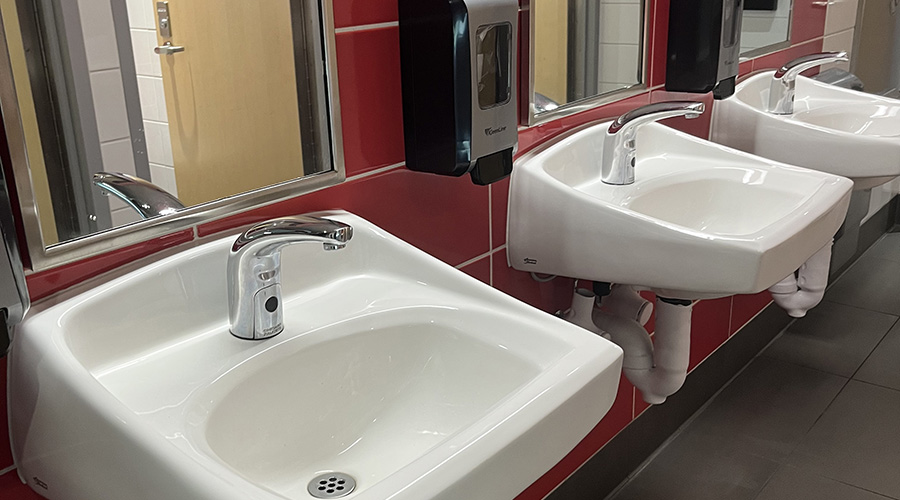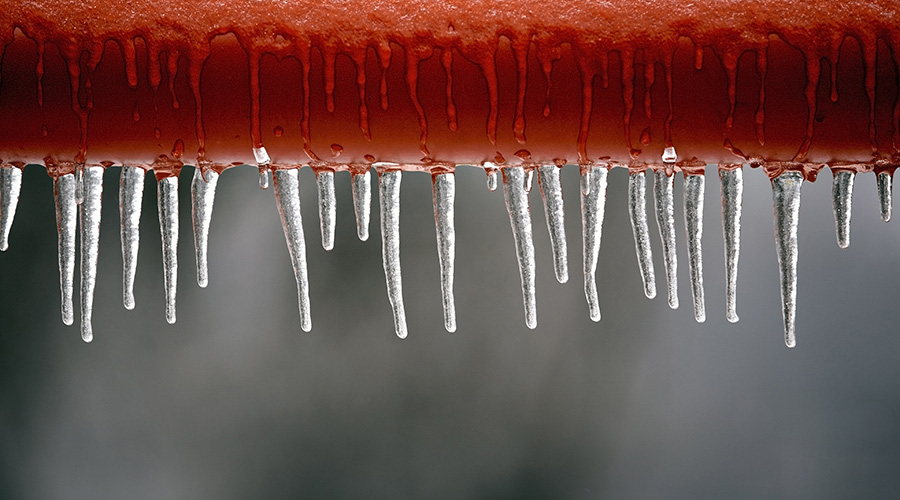Rising Water Awareness
New-generation plumbing fixtures curtail water use in restrooms and address managers’ concerns about the increasing cost of water
The availability of an inexpensive and practically unlimited supply of water has long been taken for granted in facilities throughout the country. As a result, engineering and maintenance managers had little or no incentive to conserve. They — and others in facilities — paid little attention to how, where or how much of water systems used. Water was a non-factor when it came to managing a facility. Today, the situation has changed. Prolonged regional droughts, an expanding population, and changing environmental regulations have combined to create a situation where public and private
Water systems cannot keep up with the demand for water. Even in regions with adequate supplies of water, the increase in water use has stressed the capacity of waste treatment plants. The net result is that water is no longer as plentiful or inexpensive as it once was. Many communities have implemented use restrictions to curtail the rising demand for water.
How critical the situation is for managers depends to a great extent on their facilities’ location. Those whose facilities are located in drought-stricken regions, such as the Southwest, face double-digit increases in water costs. In the most critical regions, some have been warned of possible curtailments. It is estimated that nearly one-half of the country faces drought conditions.
In other regions where water is not so scarce, the cost of water still has risen, but the impact has been less dramatic. That might change shortly. Increased emphasis on cleaning up discharges from waste-treatment plants leaves municipalities with two options: increase the number of operating treatment plants or cut the demand for water. Either way, the cost of water will rise.
To avoid possible curtailments as well as large increases in the cost of water, managers must look for ways to curtail water use. Studies of facilities have shown that 30-50 percent of the total, non-process water use in a typical facility flows through restrooms. So the restroom is an excellent place to examine first when seeking ways to reduce water use and costs.
Low-flow Fixtures
The 1992 National Energy Policy Act set standards for restroom water-using fixtures. It set maximum flow rates for new fixtures at 2.5 gallons per minute (gpm) for faucets, 1.5 gpm for showerheads, 1.6 gallons per flush for toilets, and 1 gallon per flush for urinals. For toilets and urinals, this represented a 75-80 percent reduction in water-use rates, based on fixtures installed before 1990.
In the rush to meet the standards, some early-generation models offered a compromise between performance and low water-use levels. This compromise resulted in the widespread belief that low-flow fixtures didn't work, requiring users to flush twice. While some models did have problems, those problems have been resolved in the latest generation of low-flow fixtures.
All new construction and renovation projects now must use low-flow fixtures. It also makes sense to look to upgrade older installations with the low-flow fixtures just to save water. Most pre-1990 installations use fixtures with higher flow rates. The average service life for most restroom fixtures being 20 years, so it makes sense to look to replace these fixtures with low-flow units as soon as possible.
Automatic Controls
The use of automatic or touchless controls for restroom fixtures promotes hygiene in restrooms, but it also saves water and can reduce vandalism. For urinals and toilets, the automatic control uses an infrared sensor that activates the flushing mechanism only when it is needed and for only one flush. This eliminates overflushing and sharply curtails damage and vandalism to the flush valve.
For faucets, automatic controls limit the flow of water to only those times when it senses hands under the faucet. On average, this feature reduces water use by 75 percent, and it reduces vandalism and damage because users cannot leave the water running.
Gray-water Systems
Buildings’ domestic hot- and cold-water systems distribute drinking quality water to all water use points in the building, regardless of how that water is to be used. At the same time, building roof drains and storm-water collection systems gather water from the roof and around the building and direct it away from the facility. Gray-water systems combine these systems, and in doing so, can dramatically reduce the use of water in restrooms.
Gary-water systems filter water to remove dirt and debris and stored it in tanks. Instead of piping fresh, domestic water to toilets and urinals, the system uses gray water, reducing the requirement for fresh domestic water. The systems can even save additional water by using gray water for irrigation systems.
Gray-water systems require the installation of two distribution piping systems, one for domestic water and one for the gray water. They are best suited for new construction and major renovation projects because it is difficult and expensive to install the gray-water piping system in existing facilities.
One problem with gray-water systems is the way facilities are billed for water and sewage. Most systems base sewage charges on water use. Gray-water systems generate additional sewage that is not paid for through the water bill.
Point-of-use Water Heaters
Traditionally, buildings have been designed with central, domestic water heating systems. Centrally located heaters generate the hot water, which then is piped to all areas within the building that need hot water. In larger facilities, circulation pumps are added to help reduce the wait time for hot water, particularly at locations far from the water heater.
Perhaps the most significant problem with central water heating systems is their losses. They lose heat through the system piping, valves and other components.
Equally important, these systems can waste large amounts of water. Users must run the water for several seconds before hot water is available. In many cases, more water is wasted while waiting for it to become hot than is actually needed once it is hot. Not only does this waste water, but also it wastes the energy required to heat the water.
An alternative to the central-system approach is the point-of-use water heater, which use multiple, small water heaters located where water is used throughout the facility. Each individual heater is sized to meet the requirements of that location and are placed as close as possible to minimize both water and energy losses between the heater and the use point. By minimizing the water loss waiting for hot water to reach the user, these systems offer greatly reduced water use rates, as well as improved energy efficiency.
The most significant drawback of point-of-use systems is their increased maintenance requirements. While the units are low maintenance, their use simply means there are more components that maintenance personnel must check and maintain regularly. While more maintenance might be required, the use of point-of-use water heaters eliminates a major maintenance problem found with all central systems, in that the loss of a single component will not eliminate hot water to the entire facility.
Maintenance
Programs designed to reduce water use in restrooms are not one-time efforts. While the fixtures and controls installed are low-maintenance items, they cannot be installed and forgotten. Normal use, as well as vandalism, can result in leaks and improperly operating flow-control devices. Dirt and other contaminants in the water can clog passages and valves in flow control devices, making them operate improperly.
To keep water-use rates low, managers should establish a program for regularly inspecting and testing of all water conserving devices. Front-line technicians should inspect fixtures and fittings for leaks, test and adjust automatic flow controls, and replace batteries in flow-control devices according to the interval recommended by the manufacturer.
Doing Away with Water
One of the latest products designed to reduce water requirements in restrooms is the waterless urinal. Instead of relying on a water seal to prevent odors from the waste-water system escaping into the restroom, waterless urinals use disposable cartridges filled with a sealing liquid. They require no water for operation.
With no valves, sensors, or water, these urinals eliminate problems associated with urinal overflow, splashing , and vandalism. The only required maintenance is replacing the cartridge every six months or so.
The quantity of water saved depends on the application. For example, users in school applications estimate that each installed unit saves 10,000-40,000 gallons of water each year.
Waterless urinals are most easily used in new-construction and restroom-renovation projects. While they can be retrofit into existing restrooms, installers might face problems with differences in the height of the existing piping systems and the piping for the waterless urinal.
|
Related Topics:











